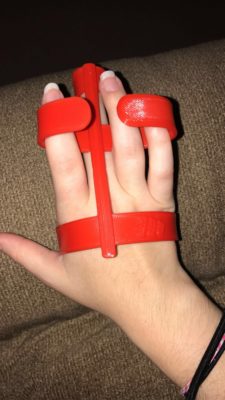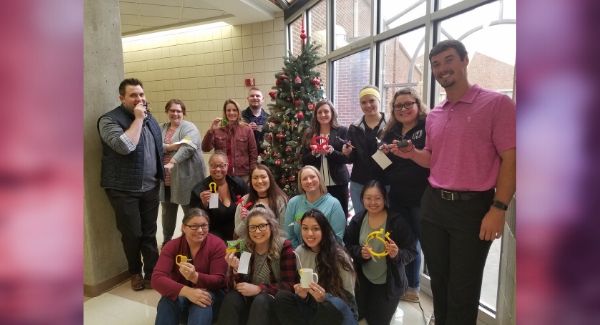The Occupational Therapy Assistant class (OTA) got creative with the 3D printer on campus.
Director of the OTA program Nancy Dahlinger presented a challenge to the students in her class. She asked them to modify an everyday item in order to make it easier for someone with a disability or impairment to use.
Dahlinger encouraged the students to research current aid objects and devices being used and creatively enhance those items.
She took it one step further by giving the students the option to either physically modify the item or to use a 3D printer to create their modifications.
The 3D printer that was purchased last year gave her the perfect opportunity to let the students choose a higher-tech version of the assignment.
Dahlinger said, “The STEM Club generously volunteered to fund the printing of items with Steve Hamersky, librarian, providing instructional support and printing in the library.”
Nearly all of the students chose to use the printer and she was not disappointed with the results.
Senior OTA student Matt Long said the most exciting part of the project was the challenge it presented. He enjoyed learning the software and how to design a 3D product with the printer.
“I designed a 3D model of an adaptive device used to aid a quadriplegic person in manipulating a gaming controller with their mouth,” explained Long.
His uncle was a quadriplegic and Long said one of his favorite memories is playing Nintendo baseball together. Another uncle had created a special wooden mouth stick so he could play the game, but over time it would break and he wasn’t able to play again until another could be made.
“I thought the idea of having a more durable plastic version would have been nice to have back then, so I wanted to see if it were possible and what it would actually look like, so I decided to make one for this project.
“This project was one of my favorites to do so far in my program and I am looking forward to any similar projects in my remaining semester.”
Senior Maggie Sweeney chose to print a typing accessory that wraps around one’s wrist, palm and middle finger. Similar to a finger splint, the item is used to assist the person with using a touchscreen device.

“I chose this item because my cousin has very flexed fingers,” said Sweeney. “It’s hard for her to use a keyboard or touchscreen device without hitting extra buttons. With this typing accessory, any user can place their hand in it and straighten their finger and type or touch a screen with little effort necessary.”
Seeing the finished product emerge from the 3D printer was exciting, but being able to create something that could be helpful to someone on a daily basis was the highlight of the project for Sweeney.
She added that using the technology helped her realize how far technology can go and how limitless the possibilities could be.
“I learned that the 3D printer could make so many designs and projects. I saw my fellow classmates make 3D prints such as games, a pencil holder and even something like a nail clipper holder.”
Dahlinger added, “This assignment helps students continue building their skills of activity analysis, problem-solving and embracing new technology for lifelong learning.”


